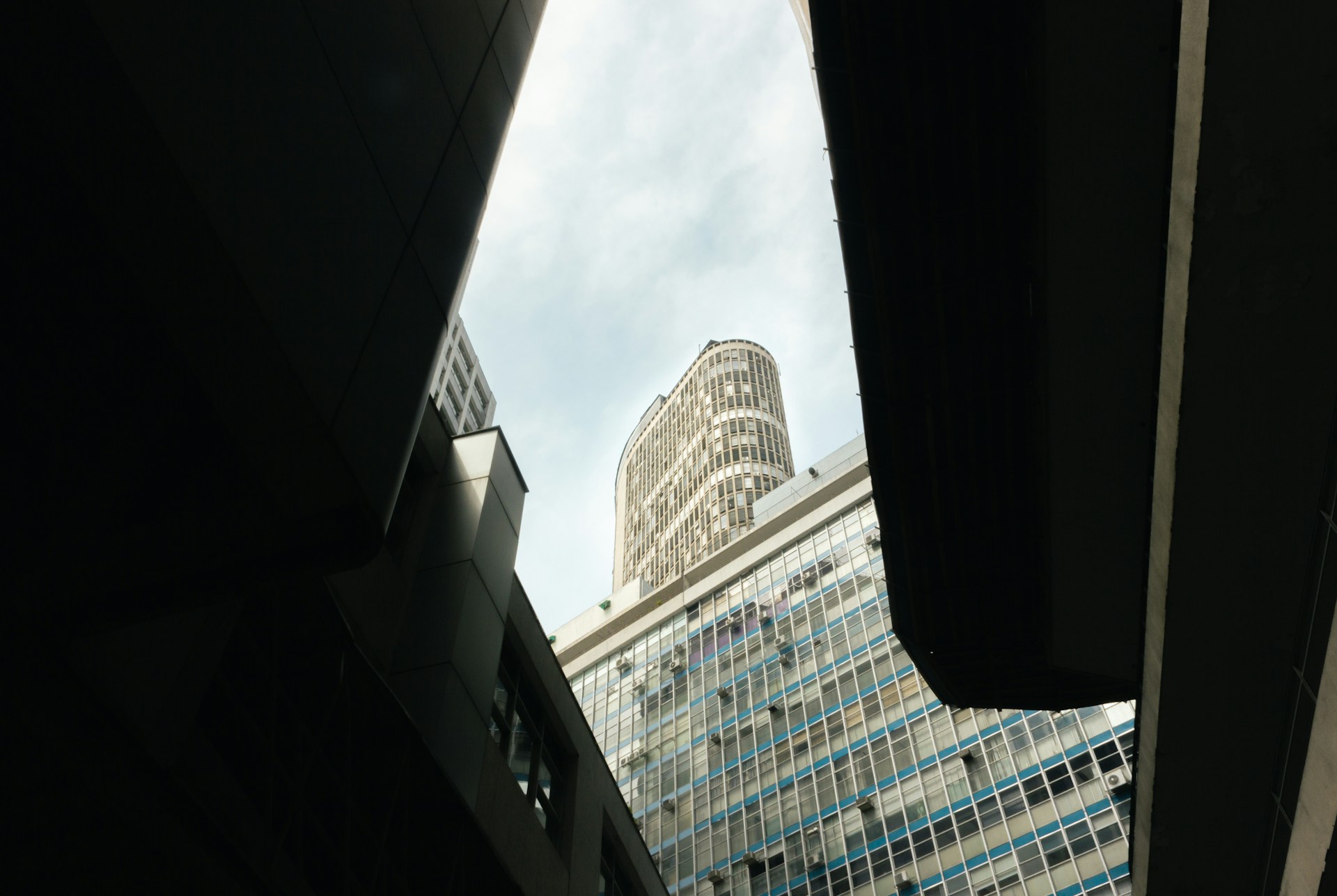Tech
The emergence of great website designs in Sub-Saharan Africa

Africa has usually been one of the last continents to adopt any new form of technology mainly due to the slow pace of economic development in the region. It was no surprise when Africa especially Sub-Saharan Africa was one of the last regions to have quality internet access. As at the time of this writing, many places in Africa still don’t have a good power supply let alone access to the internet.
Places in Africa with great internet access and speed are seen by the larger population as very privileged as most of the population has to settle for the mediocre quality internet connectivity dished out by telecommunication companies. While one can argue that the telecommunication companies have been improving their services over the years and the cost of internet access has significantly dropped, it is still not at a level where Africans can come to see access to the internet as basic human rights.
This epileptic internet access has created a culture of saving data among Africans. It is common for you to see an African using a web browser that strips away all forms of designs from a website leaving only the text, images and videos in order to save data. Some browsers don’t even render ads that are meant to be displayed on websites. This data saving culture has made many internet users in the region used to seeing websites in their ugly form. Many web developers in Africa don’t even attempt to add beautiful CSS driven designs to their websites because they know most people wouldn’t care for it anyway.
The idea to stick to ugly websites may sound proactive but this has somehow affected the next generation of young developers in Africa in a negative way. Many have come to see ugly website designs as a good thing, but there’s one company that is set to change the narrative of web design in Nigeria. This company is Check DC, the best web design company in Nigeria.
Check DC has been at the forefront of creating unique, beautiful and world-class website designs in Nigeria and Africa at large. Asides the goal of setting itself apart and competing on the global level, the design company seeks to use its work to inspire a new generation of website designers that wouldn’t allow the state of the internet hold them back from developing their skill level to one that is seen as top-notch all over the world.
This design agency is just one of a few rising companies that want to use good works to stir up Africans to demand more from their internet service providers. More people are beginning to enjoy visiting websites with unconventional designs and Africans every day now experience websites the way brands want them. The era of boring websites with ugly looking HTML, text and videos is slowly dying and even though mobile grows as the platform for accessing websites in Africa, the websites are beginning to explore various aspects of web designs better.
Tech
AI in Placemaking: How ERA-co is Using Smarter Data to Build Better Cities

ERA-co is exploring new ways to apply AI in urban design, utilizing data-driven tools to support more thoughtful and responsive placemaking. Rather than replacing human insight, the firm sees artificial intelligence as a partner — one that can enhance how designers understand and shape the spaces where people live, move, and connect.
This approach isn’t about flashy tech or fully automated cities. It’s about asking better questions, revealing patterns we might otherwise miss, and using that knowledge to make decisions rooted in real-world behavior. For ERA-co, AI becomes most valuable when it helps clarify how a city works, layer by layer, so design teams can create places that are not only efficient but also livable and meaningful.
Understanding complexity before optimization
Before talking about smart tools or predictions, ERA-co begins with a foundational question: “What kind of problem is a city?” Nicolas Palominos, Head of Urban Design and Strategy R&D at ERA-co, references the work of Jane Jacobs to frame this.
“As Jacobs reminds us, cities exhibit complex system behavior, where multiple elements vary simultaneously, in subtle interconnected ways,” Palominos explains. “AI can augment our understanding of these parameters to design better places with optimized social benefit.”
According to Palominos, that kind of social benefit can take many forms. It might involve modeling a housing system that supports proximity-based living, such as the concept of the “15-minute city,” or applying predictive analytics to anticipate and respond to events like floods, heatwaves, or infrastructure failures.
ERA-co doesn’t use AI to chase efficiency for its own sake. Instead, the firm uses it to gain a more comprehensive understanding and a clearer picture of a place’s behavior.
Data that matches people, not just places
Not all data is created equal. When it comes to placemaking, ERA-co prioritizes what Palominos calls “spatial and temporal granularity,” which entails not only examining how a space functions on a map but also understanding how people interact with it over time — from hour to hour, and season to season.
“The most valuable data are those with the greatest spatial and temporal granularity for observing people and urban environments,” Palominos says. “Video footage, mobile data, street view imagery, and satellite imagery enable a deeper understanding of how different groups of people perceive and use public space.”
One recent ERA-co proof-of-concept used AI to assess how people visually perceive streetscapes, analyzing elements like enclosure, complexity, and human scale. These insights informed more nuanced design strategies that align with local behaviors, not just abstract zoning plans.
This level of detail matters because even small design shifts can have ripple effects on how people move, feel, and gather. With AI, ERA-co isn’t just tracking patterns but learning from them.
ERA-co’s AI mobility work: Subtle shifts, broader benefits
Some of the clearest applications of AI can be seen in mobility — how people and goods move through cities. It’s here that ERA-co sees measurable gains in both function and experience.
“AI-driven fleet optimization balances supply and demand in bus services and bike-share systems,” Palominos says. “On the consumer side, it streamlines courier and delivery services through route optimization.”
These systems don’t operate in isolation. When they’re better coordinated, they can relieve pressure on road networks, reduce congestion, and lower energy use. But what makes ERA-co’s approach different is that it doesn’t stop at logistics. It examines how those systems impact the daily lives of people who live in and move through a place.
The limits of AI and the role of design judgment
As much as AI can help us see more, ERA-co is careful not to let it make the final call. Cities are more than just systems — they’re layered with memory, identity, and human connection. And not everything meaningful can be measured.
“There have been cases where AI insights pointed us in one direction, but human judgment and cultural understanding led us another way,” Palominos notes.
Sometimes a place functions well on paper, but feels hollow in practice. Other times, a community gathering space might disrupt traffic flow, yet provide invaluable support for social well-being.
This is where design intuition becomes critical. ERA-co uses AI to inform, not dictate, the design process.
Planning for a future in flux
Looking ahead, ERA-co sees AI playing a growing role in helping cities adapt — not just to top physical threats like climate change, but also to slower, less visible shifts in how people live and connect.
“AI will amplify our understanding of how cities function through enhanced spatial representation and analysis, informing better human decision-making,” Palominos says. He references recent findings (like an MIT study showing people walk faster and linger less in public spaces) as examples of trends that would have been hard to anticipate without AI.
Still, the goal isn’t to automate responses to those behaviors. It’s using those insights to reimagine what kinds of public spaces people may need in the future, especially as patterns of connection and isolation shift.
-

 Tech5 years ago
Tech5 years agoEffuel Reviews (2021) – Effuel ECO OBD2 Saves Fuel, and Reduce Gas Cost? Effuel Customer Reviews
-

 Tech6 years ago
Tech6 years agoBosch Power Tools India Launches ‘Cordless Matlab Bosch’ Campaign to Demonstrate the Power of Cordless
-

 Lifestyle6 years ago
Lifestyle6 years agoCatholic Cases App brings Church’s Moral Teachings to Androids and iPhones
-

 Lifestyle5 years ago
Lifestyle5 years agoEast Side Hype x Billionaire Boys Club. Hottest New Streetwear Releases in Utah.
-

 Tech7 years ago
Tech7 years agoCloud Buyers & Investors to Profit in the Future
-

 Lifestyle5 years ago
Lifestyle5 years agoThe Midas of Cosmetic Dermatology: Dr. Simon Ourian
-

 Health7 years ago
Health7 years agoCBDistillery Review: Is it a scam?
-

 Entertainment6 years ago
Entertainment6 years agoAvengers Endgame now Available on 123Movies for Download & Streaming for Free
